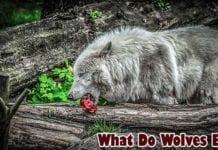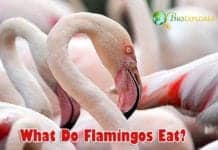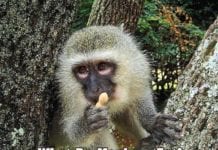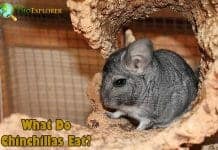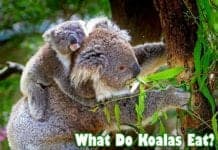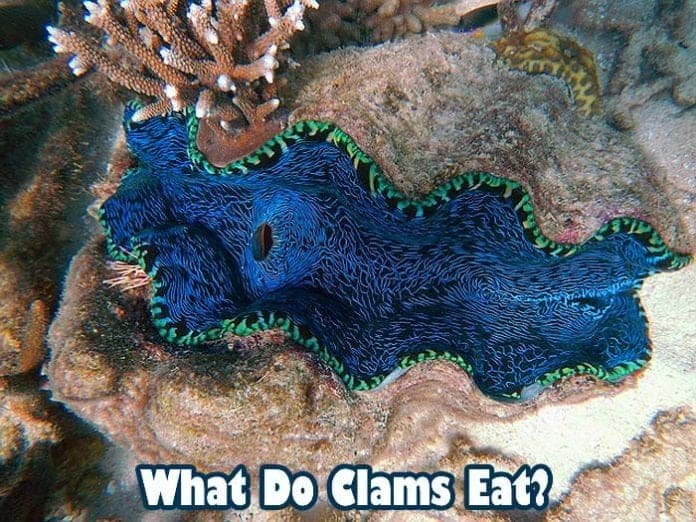
What Do Clams Eat? Clams are classified as mollusks of class Bivalvia. They have two shells which are closed by abductor’s muscles.
Some species are found in freshwater while others in marine environs. Clams mainly feed on planktons found in water.
Clams eat through a process referred to as filter-feeding.
Table of Contents
What Do Clams Eat?
| Giant Clam (Tridacna gigas) | Phytoplankton, zooplankton, and algae. |
| Asiatic Clam (Corbicula fluminea) | Plankton. |
| Razor Clam (Siliqua patula) | Phytoplankton (dinoflagellates and diatoms) |
| Soft Shell Clam (Mya arenaria) | Zooplankton, phytoplankton, benthic diatoms, and dissolved organic materials. |
| Nut Clam (Nucula proxima) | Bacteria and decomposing organic materials. |
![]()
Clams Diet by Types
Over 15,000 species of clams exist. Examples of clams will be discussed in this section, including their preferred habitats.
What Do Giant Clams Eat?
They are filter feeders consuming phytoplankton and zooplankton found in the water. The giant clams also consume the sugars and proteins produced by algae that live on their tissues.
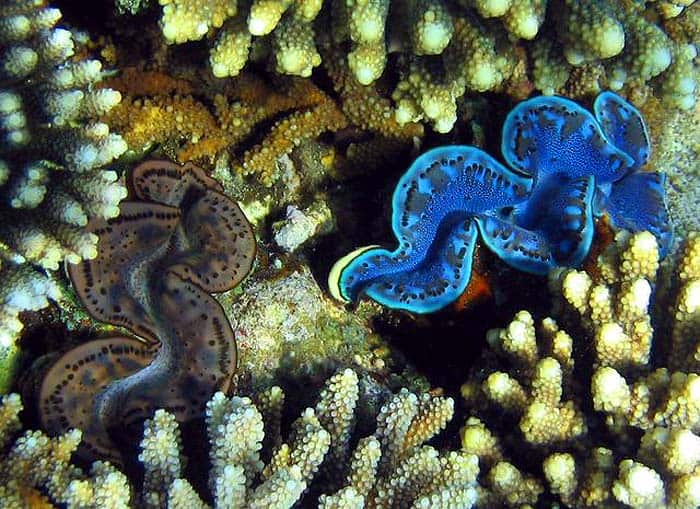
- Giant clams achieve their enormous size because of feeding on the proteins and sugars produced by the algae that reside in their tissues.
- Giant clams have a symbiotic relationship with zooxanthellae (algae) that live in their tissues.
- They obtain food from the algae while the algae benefit from having a safe home to live and thrive.
- They can grow to about 4 feet and can weigh up to 500 pounds. They inhabit warm marine waters of the Pacific and Indian oceans.
![]()
What Do Asiatic Clams Eat?
| Animalia | Veneroida | Corbiculidae | Corbicula | Corbicula fluminea |
Asiatic clam feeds on plankton.

- The Asiatic clam is commonly found in wide distribution in Asia, South and North America, some areas of Africa, and Europe.
- The Asiatic clam is a little bit smaller compared to other clams, and they spot a light green to light brown color.
- This clam inhabits lakes, ponds, streams, and rivers.
![]()
What Do Razor Clams Eat?
| Animalia | Veneroida | Pharidae | Siliqua | Siliqua patula |
Razor clam’s diet includes a wide array of phytoplankton which may include dinoflagellates and diatoms.
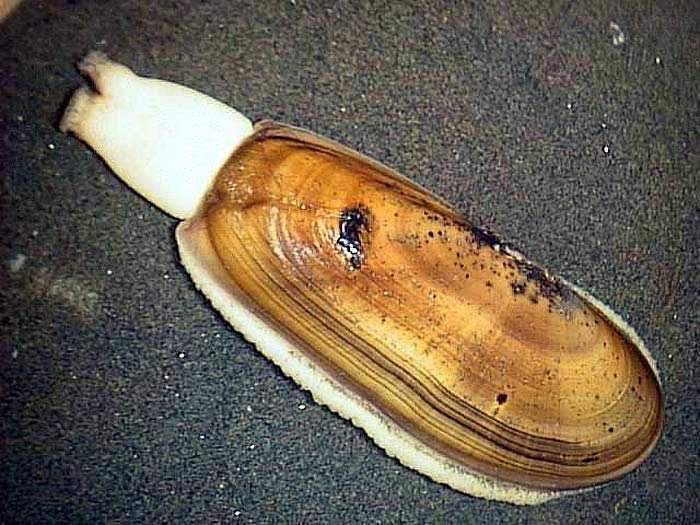
- The razor clams are notable for their elongated bivalves.
- Their shells can reach up to 160 mm, and they can live for about 18 years.
- They can be found in intertidal beach areas as well as subtidal regions of depths of about 20 meters.
![]()
What Do Soft Shell Clams Eat?
| Animalia | Myoida | Myidae | Mya | Mya arenaria |
Soft shell clam is a suspension feeder, typically consuming a diet of zooplankton, phytoplankton, benthic diatoms, and dissolved organic materials.
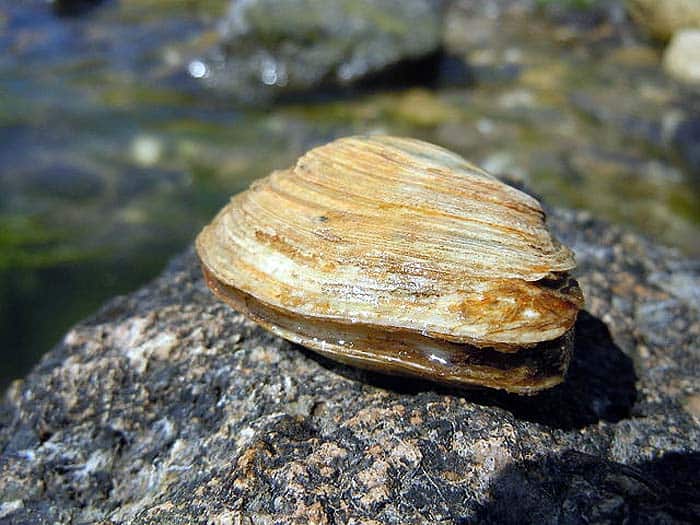
- The soft-shell clams, also dubbed as sand gapers, are oval-shaped, thin and they grow to a length of 4 inches.
- Within their shells lies a soft body that constitutes of gills, a muscular foot, a heart, a stomach, and a kidney.
- They inhabit muddy and sandy bottoms of bays and estuaries.
![]()
What Do Nut Clams Eat?
| Animalia | Nuculoida | Nuculidae | Nucula | Nucula proxima |
Nut clam feeds on bacteria and decomposing organic material that accumulates on the seafloor.
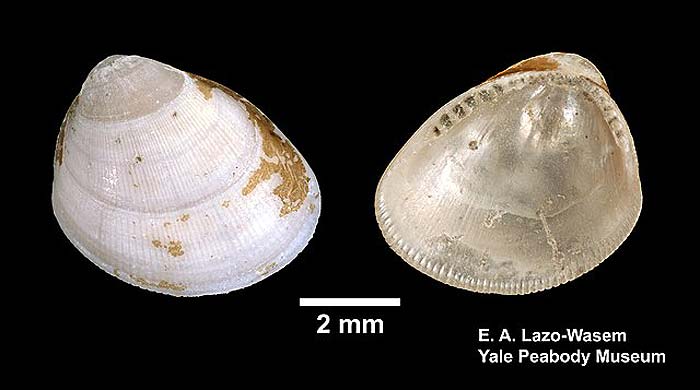
- The nut clams are notable for their elongated shells which have pointed posterior ends.
- They typically inhabit the muddy and sandy bottoms of the marine waters.
![]()
Differences Between Clams and Oysters
- The critical differences between clams and oysters are that the shell of a clam is smooth with no ridges and flashy while an oyster has a sturdy and hard outer shell.
- Clams are generally found in freshwaters whereas oysters flourish in marine habitats.
- There are different sub-species of oysters and clams. True oysters do not produce pearls.
![]()
How Do Clams Hunt?
Clams obtain their food through filter feeding.
- Water containing food material (zooplankton or organic material) enters via the incurrent siphon.
- The water then passes through their gills. Here, the water meets with glue-like mucus where the food particles are trapped.
- The trapped food is then transported through the cilia to the labial palps and then to the mouths of the clams.
- The water that passed through the gills leaves the clam via the exhalant siphon.
![]()
When Do Clams Eat?
Clams display diverse activity. For instance, giant clams often display nocturnal activity. As a result, they tend to engage in more locomotion and feeding at night.
![]()
How Often Do Clams Eat?
How often clams feed depends on many factors, and one such aspect is locomotion.
- Locomotion reduces with age meaning as a clam gets older, it moves less, which implies lower activity and thus reduced food consumption.
- Younger clams are active and will thus tend to feed very often to promote growth.
- Further, as clams metamorphose, they tend to change their diet.
- The reorganization of feeding habits results in their higher mortality rates (as they metamorphose).
- It is likely that the confusion during the reorganization of feeding results in less frequent feeding.
![]()
What Eats Clams?
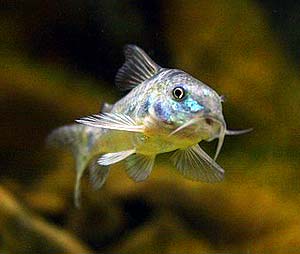 A vast range of organisms considers clams to be an essential source of nutrition.
A vast range of organisms considers clams to be an essential source of nutrition.
- These predators include otters, Atlantic moon snail, octopuses, alligators, raccoons, muskrats, fish like catfish, starfish, dolphins and sunfish, different bird species such as crows, and frogs.
- Humans also include a variety of clams to their vast palate.
![]()
Where Do Clams Fit in the Animal Food Chain?
Clams are important to the animal food chain. They provide a good source of nutrition to many organisms, including humans who harvest them in different parts of the globe.
![]()
Cite This Page
Key References
- Images are from wikimedia under the creative commons license.
- “What do oysters and clams eat?” – NEFSC. Accessed August 26, 2019. Link.
- “ADW: Tridacna gigas: INFORMATION”. Accessed August 26, 2019. Link.
- “Asian Clams” – Lake George Association. Accessed August 26, 2019. Link.
- “ADW: Corbicula fluminea: INFORMATION”. Accessed August 26, 2019. Link.
- “ODFW Razor Clam food”. Accessed August 26, 2019. Link.
- “Fisheries and Oceans Canada”. Accessed August 26, 2019. Link.
- “MarLIN – The Marine Life Information Network – Sand gaper (Mya arenaria)”. Accessed August 26, 2019. Link.
- “Soft-shelled Clam”. Accessed August 26, 2019. Link.
- “Post | Bailey-Matthews National Shell Museum”. Accessed August 26, 2019. Link.
- “Nuculanidae – Elongate Nut Clams”. Accessed August 26, 2019. Link.
- “BIO 5 GENERAL BIOLOGY”. Accessed August 26, 2019. Link.
- “The behaviour of giant clams (Bivalvia: Cardiidae: Tridacninae)”. Accessed August 26, 2019. Link.
- “Clam | EcoSpark”. Accessed August 26, 2019. Link.


